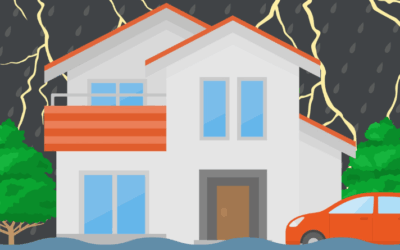Buildings insurance policies can be packed with confusing terms and legal phrases that make it hard to understand exactly what you’re covered for. Whether you’re a homeowner or landlord, getting familiar with the key terms can help you make better decisions and avoid nasty surprises when making a claim.
This jargon-buster article breaks down 15 of the most common terms you’re likely to encounter in relation to your buildings insurance.
- Excess
The amount you agree to pay towards a claim. For example, if your excess is £250 and the damage costs £1,000 to repair, your insurer pays £750. There are usually compulsory and voluntary excess options. - Indemnity
The principle that insurance should put you back in the position you were in before the loss – no better, no worse. It’s about compensation, not profit. - Premium
The amount you pay for your buildings insurance policy. This could be paid monthly or annually and is based on the level of cover and the risk profile of your property. - Sum Insured
The maximum amount your insurer will pay out for rebuilding your home. This should reflect the full rebuild cost, not the market value. - Underinsurance
When the sum insured is less than the actual rebuild cost of your property. This can lead to reduced payouts or even claim rejections under the “average clause.” - Average Clause
A clause that reduces your payout if you’re underinsured. For example, if your property is insured for only 50% of its actual rebuild value, the insurer may only pay out 50% of any claim. - Buildings Insurance
Covers the physical structure of your home, including walls, roof, windows, doors, and permanent fixtures like kitchens and bathrooms. Required by most UK mortgage lenders. - Accidental Damage
An optional add-on covering unintentional one-off incidents to the building, such as drilling through a pipe or damaging a wall during DIY. - Peril
A specific risk or cause of loss covered by the policy, such as fire, flood, storm, or subsidence. - Rebuild Cost
The estimated cost of rebuilding your home from scratch, including materials, labour, and professional fees. Always use a UK-specific rebuild calculator (e.g. BCIS). - Escape of Water
Damage caused by water leaking from pipes, tanks, or appliances. Often one of the most common types of claims on buildings insurance. - Heave, Subsidence and Landslip
Heave: upward movement of the ground beneath a building. Subsidence: sinking of the ground. Landslip: collapse of land downhill. These structural risks are usually included but may carry higher excesses. - Policy Schedule
The document outlining what is and isn’t covered under your policy, limits, excesses, and any endorsements. - Exclusion
Anything not covered by the policy. Common exclusions include wear and tear, poor maintenance, or pre-existing damage. - Endorsement
An amendment to your policy that changes or clarifies standard terms. For example, requiring you to improve security before certain covers apply.
Understanding these common buildings insurance terms can help you make smarter choices when comparing policies, speaking with brokers, or filing claims. Insurance shouldn’t be a mystery, and with a bit of knowledge, you can make sure you’re properly protected.
Need help navigating your buildings insurance policy or finding the right cover? Contact The Bateman Group for clear, friendly advice from UK-based insurance experts.



